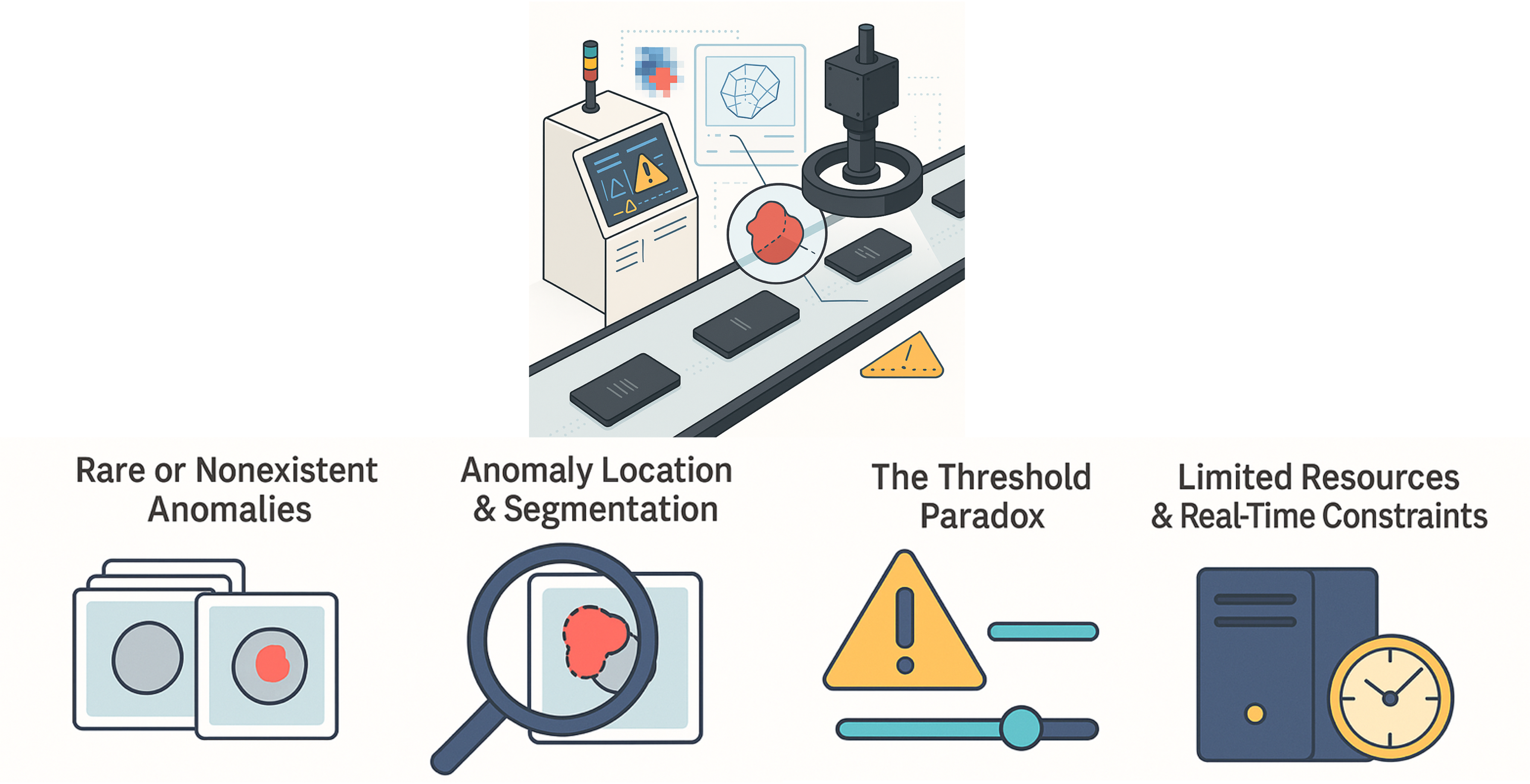Towards an anomaly detection model based on deep learning operate without real abnormal images for training while ensuring robust and generalizable performance in industrial environments
ABSTRACT :
Industry 4.0 leverages artificial intelligence and computer vision to enhance automation and quality control in industrial processes. A crucial aspect of this advancement is anomaly detection, which ensures defect identification, failure prevention, and product compliance. However, implementing deep learning models for anomaly detection presents significant challenges related to data availability, class imbalance, annotation costs, and computational constraints in industrial environments.
A primary challenge is the scarcity of abnormal images. Since industrial production is optimized to minimize defects, anomalies are rare and often highly variable, making it difficult to build a representative dataset for supervised learning. Additionally, class imbalance exacerbates the problem: when 99.9% of products are normal, traditional binary classification models tend to favor the majority class, reducing their ability to generalize and detect rare defects.
Another major constraint is the cost and complexity of annotation. Labeling anomalies often requires human expertise, making the process expensive and time-consuming. Furthermore, some defects are subjective or difficult to define precisely, increasing annotation inconsistency. Computational and storage limitations also pose challenges, particularly for real-time industrial applications where models must operate efficiently under strict latency constraints.
Given these challenges, the central research question is:
How can a deep learning-based anomaly detection model operate without real abnormal images for training while ensuring robust and generalizable performance in industrial environments?
The goal is to develop a self-supervised, efficient, and scalable model capable of detecting anomalies without explicit supervision, minimizing annotation requirements, and optimizing computational resources. Such an approach would enable real-time, automated industrial inspection, enhancing defect detection with minimal human intervention.
KEYWORDS : Self supervised learning, one class classification, data annotations, anomaly detection


Benchmarking of Anomaly Detection Methods for Industry 4.0: Evaluation, Ranking, and Practical Recommendations
Big Data and Cognitive Computing 9 (5), 128, 2025
Access publicationCARENET: A NOVEL ARCHITECTURE FOR LOW DATA REGIME MIXING CONVOLUTIONS AND ATTENTION
Access publicationA comparative study of reduction methods applied on a convolutional neural network
Electronics 11 (9), 1422, 2022
Access publicationA New Comparative Study of Dimensionality Reduction Methods in Large-Scale Image Retrieval
Big Data and Cognitive Computing 6 (2), 54, 2022
Access publication


